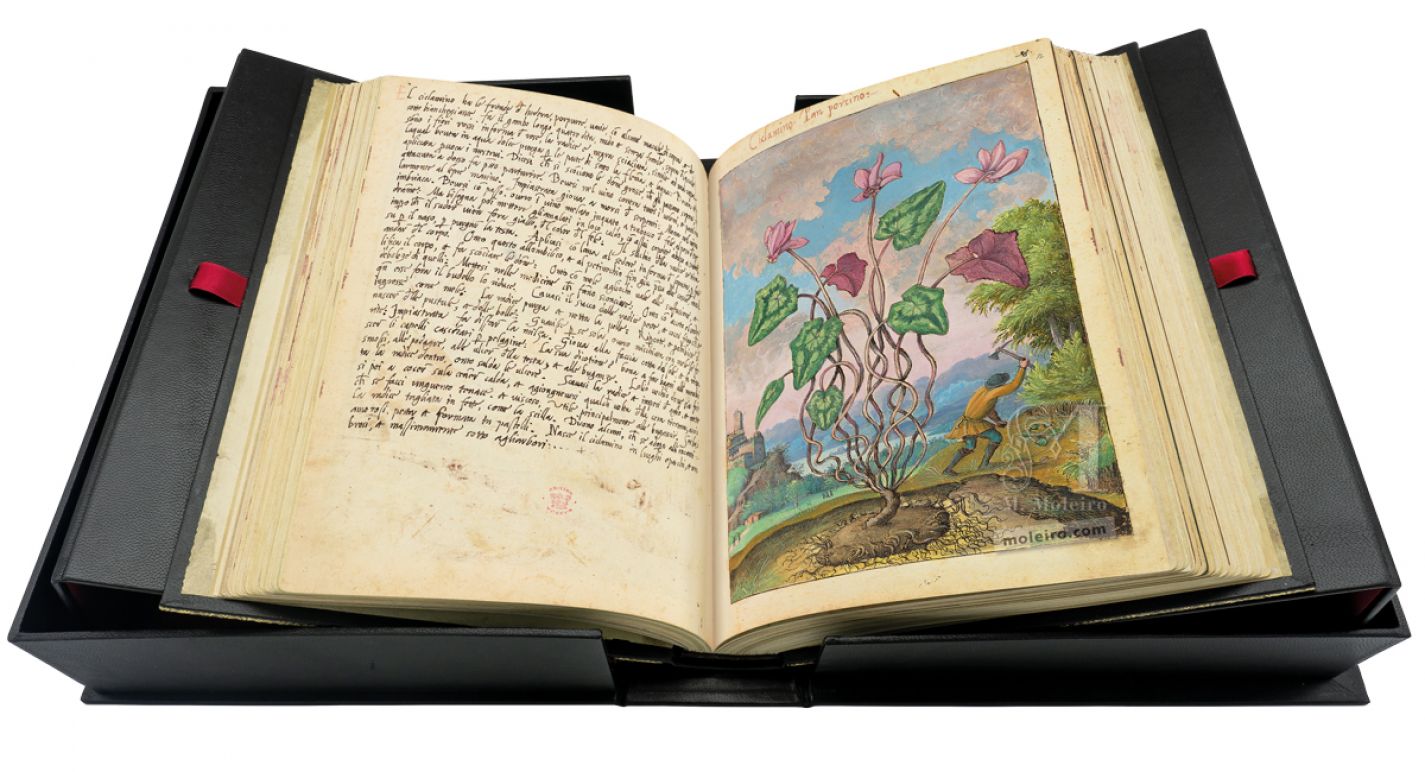Sowbread has leaves like ivy, purplish, variegated, with some whitish spots on the upper part and below; its stalk is four fingers high, bare and without leaves; above it are the red flowers in the shape of a rose. The root is black, flattened, similar to a turnip; drunk in honeyed water, it purges phlegm and water6 down through the bottom; drunk and applied, it induces the menstrual cycle. It is said that pregnant women who tread on it will miscarry, and that those who wear it tied around them will give birth quickly. It is drunk in wine as an antidote to all poisons, especially that of the sea hare. Applied as a poultice, it is a remedy against snake bite; mixed with wine it causes drunkenness. For excess of bile, three drams of it are drunk with raisin wine or with watered-down honeyed wine; but afterwards the sick must be put in a warm place, with many covers wrapped around them, to make them sweat, and the sweat which is secreted is yellow, the colour of bile. The juice of the root is taken through the nose to clear the head; it is applied to the anus with wool in the form of a suppository to bring down excrement. Rubbed in an ointment onto the navel and pube, down to almost the thighs, it has a laxative effect and induces miscarriage in pregnant women; applied in an ointment with honey to the eyes, it is a good remedy for watering of the eyes7 and defects in the sight. It is added to drugs that cause miscarriage. If the anus is rubbed with this juice and vinegar in a case of prolapse, it will cause the rectum to return into its place. The juice is extracted from the pounded root and boiled until it has the thickness of honey. The root purges and cleans the skin, stops the rush of humours, and prevents the appearance of pimples and blisters. By itself, or mixed with honey, it heals wounds; applied as a poultice, it dissolves hardness in the spleen. It is of benefit for a sunburnt face and restores hair lost through baldness. A decoction of it is useful for bathing sprained joints or those affected by gout, for ulcers on the head, and chilblains. The old oil in which the root was fried, applied as an ointment to wounds, promotes healing. If the root is hollowed out, filled with oil and put to cook on hot ashes, sometimes adding Tyrrhenian wax, a strong and viscous ointment is produced, useful above all for chilblains. The root is preserved cut into slices, like the squill. It is said that, pounded and made into pills, it is used in love-spells. Sowbread grows in shady places with little sun, particularly under trees (f. 11v).
This plant grows in deciduous forests almost everywhere in Italy, France and southern Europe from Italy eastwards. It blossoms in summer and autumn. The tuber of this plant contains saponins and is a powerful emetic when eaten fresh. It is to be crushed for use as an ichthyotoxicin, i.e. to poison slow moving parts of rivers and catch the stunned fish. Despite being toxic to humans, it is harmless to pigs and they eat it with relish, hence its common name.
Ramón Morales Valverde
Real Jardín Botánico de Madrid
(Excerpt from the commentary volume of Mattioli's Dioscorides illustrated by Cibo)
